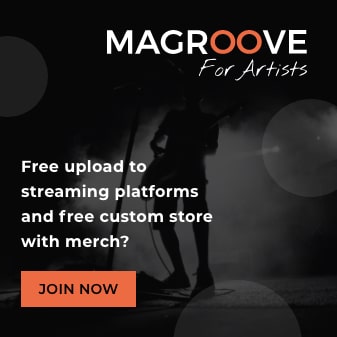Nowadays, all artists must have an informed stance and fully understand what are royalties in music so they don’t get ripped off. This is the main way musicians get paid for their records and how they can make sure their copyrights are going to the right place. Today, we want to talk specifically about performance royalties. This is a very prevalent type of payment, so it’s important to be in the loop. Without further ado, let’s head into it.
What are performance royalties?
There are four main kinds of royalties in the music industry: mechanical royalties, sync royalties, print royalties and performance royalties. The latter one comes up anytime your song is played on the radio, TV, live performances or as background music in public places. You have probably heard of Performing Rights Organizations (PROs). If that isn’t the case, don’t sweat – we’ll sum it up for you. PROs are companies that specialize in collecting licensing fees for artists. This means they are the ones making sure musicians will receive performance royalties for each play their music gets. You need to understand what those are to get the full picture of what sum of money companies owe you for your plays on radio, TV, streaming services and so on. Even if listeners only play your music on streaming services for one person in a private session, you’ll get performance royalties. This is the way copyright regulations work currently. In this case, we call it digital performance royalties. Both the songwriter and the recording artists – in case they’re different people – will get a cut from the profit. The performer gets a direct profit while the songwriter gets their payment through the publisher.How does it work?
It is estimated that uncollected royalties add up to 2.5 billion dollars only in the U.S. This is money that should go directly to artists but ended up stuck in a limbo because of lack of proper representation. That’s why it is so important to affiliate with a PRO. The dynamics of performance copyrights are actually pretty simple. Every time someone plays a song in a public setting (radio, TV, live or digital performance), it generates licensing fees. As we have mentioned, the Performing Rights Organizations are the ones collecting the money and distributing it to whoever owns copyrights to that work. This is where the rules and regulations can get a little complicated. Songwriter royalties, for instance, make up 50% of performance rights. The other half goes to the publisher. They are responsible for distributing the money to the recording artists. The percentage depends upon their agreed deal. However, if you're wondering how are royalties split on a song, there is much more to it. In this context, affiliating with a PRO in best way to make sure you and your band will get 100% of your performance copyrights. Some of those organizations work for-profit, while others are non-profit. There’s even a case for one PRO that functions like a club you have to be invited into. Do your research to make sure you’re choosing the one that best suits your needs.Royalties collection and payment
 Even though this article is all about performance royalties, it’s worth talking about other types of royalties. If you did some research you could probably be wondering what are mechanical royalties, for instance. Often tied up with performance royalties, they are due every time music is distributed through physical or digital medias.
So, yes, streaming services should pay both performance and mechanical rights. Unfortunately, until not long ago it was practically impossible for independent artists to collect the second type. After the creation of The Mechanical Licensing Collective, it’s now much easier to do that.
The money collected comes from whatever company is responsible for that performance. So, it’s either the TV network, radio station, streaming service or event promoter. After that money is collected by the PRO, it goes to the artists on a schedule that varies by each company.
Some of the top organizations in the market today are BMI, ASCAP and SESAC. All those three have different policies for artists that want to be represented by them. The contract is usually firmed between the Performance Rights Organization and the publisher – for indie artists, they’re often their own publisher. The deadline to get your royalties’ money goes from 90 days up to six months.
Even though this article is all about performance royalties, it’s worth talking about other types of royalties. If you did some research you could probably be wondering what are mechanical royalties, for instance. Often tied up with performance royalties, they are due every time music is distributed through physical or digital medias.
So, yes, streaming services should pay both performance and mechanical rights. Unfortunately, until not long ago it was practically impossible for independent artists to collect the second type. After the creation of The Mechanical Licensing Collective, it’s now much easier to do that.
The money collected comes from whatever company is responsible for that performance. So, it’s either the TV network, radio station, streaming service or event promoter. After that money is collected by the PRO, it goes to the artists on a schedule that varies by each company.
Some of the top organizations in the market today are BMI, ASCAP and SESAC. All those three have different policies for artists that want to be represented by them. The contract is usually firmed between the Performance Rights Organization and the publisher – for indie artists, they’re often their own publisher. The deadline to get your royalties’ money goes from 90 days up to six months.

